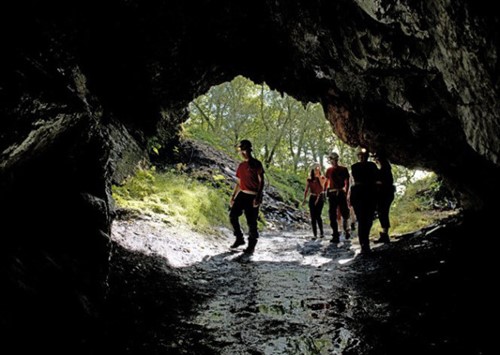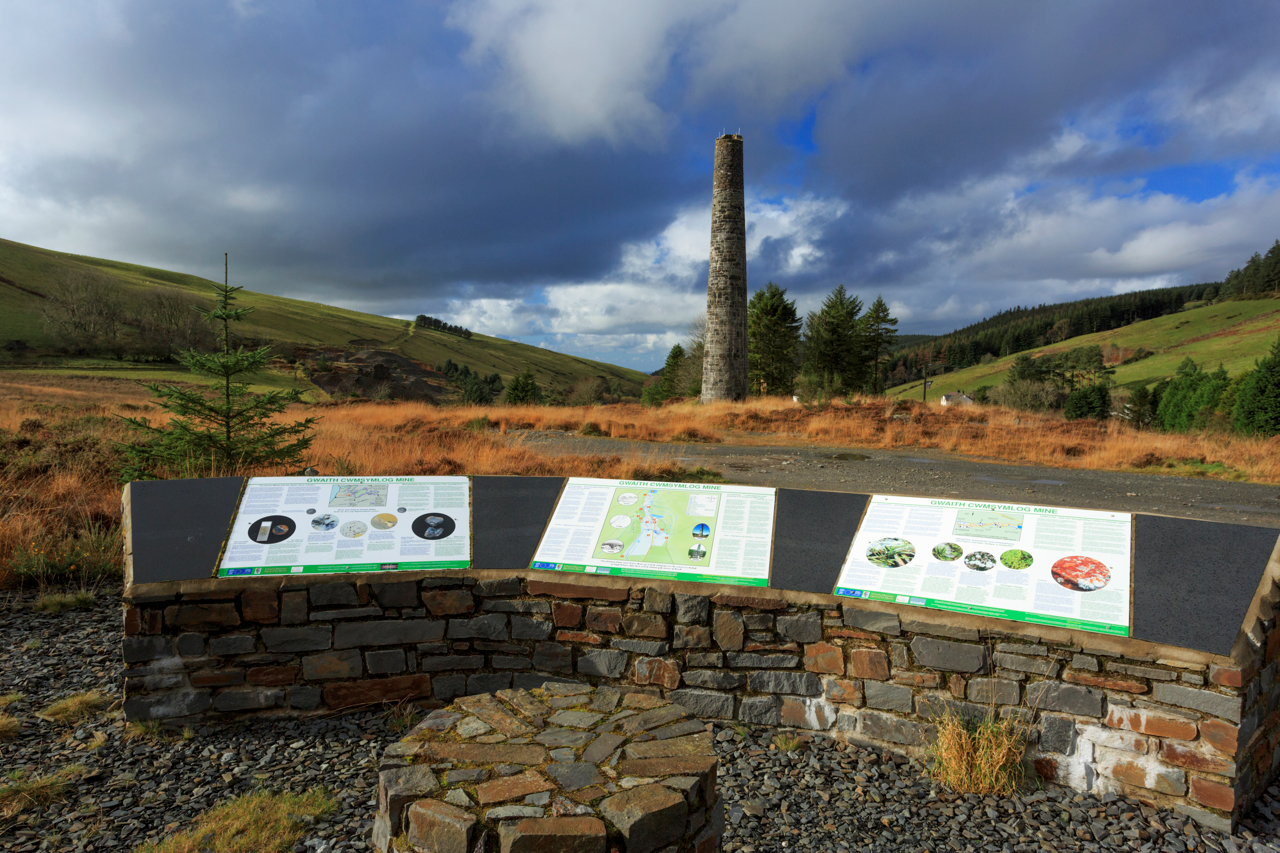
The physical remains of the old crusher houses and spoil tips, smithies, miners’ cottages, nonconformist chapels and graveyards can be seen across northern Ceredigion.
Some of the mine remains are visible from the road, most notably in the upper reaches of Cwmystwyth, and around the miners village of Pontrhydygroes. At Trisant and Ystumtuen today's tranquil lakes and ponds were created to supply water for the processing of the metal ores.
The communities of Ystumtuen and Pontrhydygroes - on opposite sides of the Rheidol valley gorge - grew with the mining boom.
On the slopes of the Rheidol valley, below Ystumtuen, is a spoilheap known as 'The Stag' . It is best seen on a trip on the Vale of Rheidol Railway. Like other mining remains it is a listed ancient monument.
The Vale of Rheidol Railway itself was originally planned as a means of transporting the silver rich lead ore from the valley's mines to Aberystwyth harbour for export.
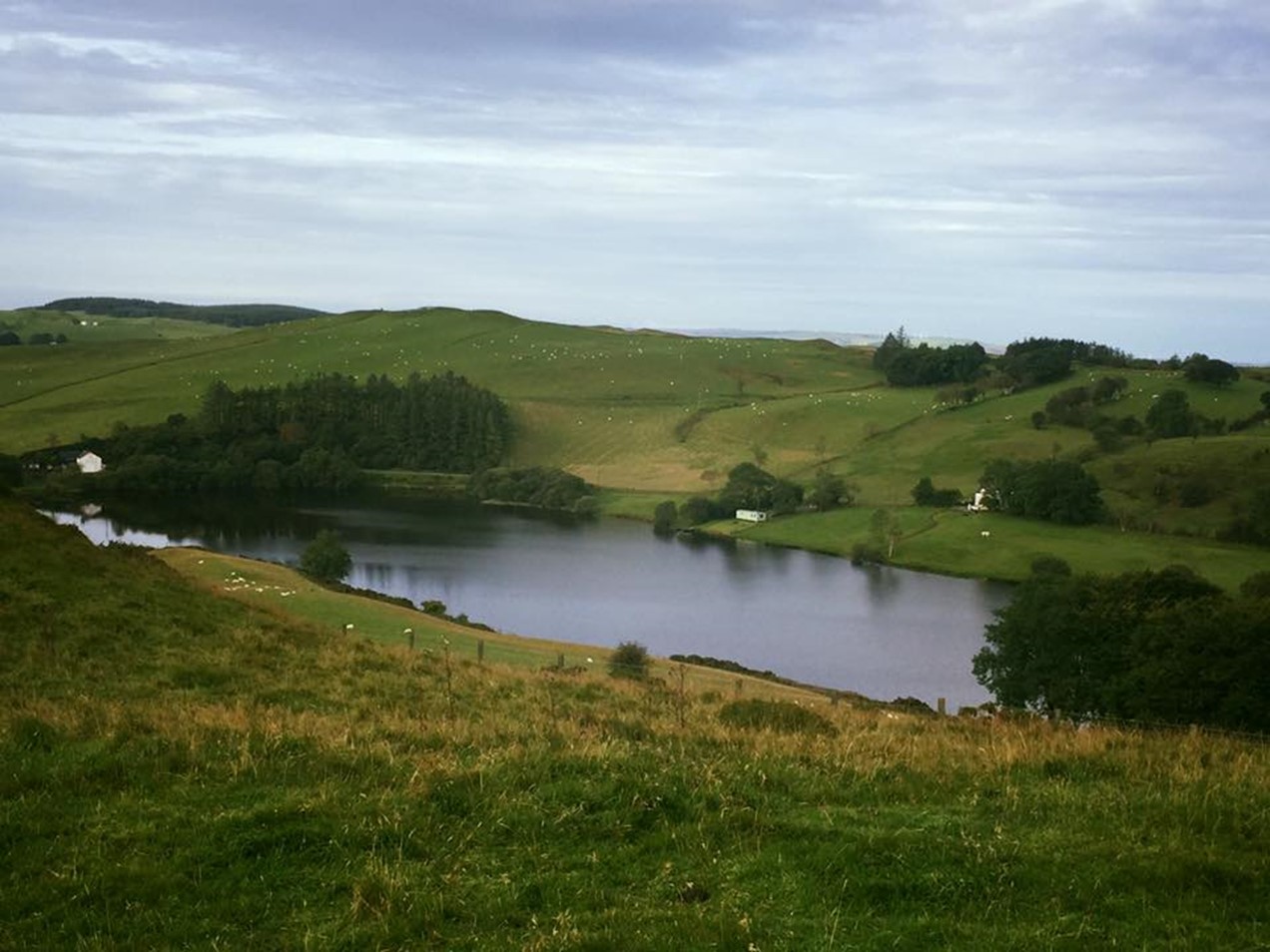
To get the most out of a visit to the mining sites of Ceredigion take a guided tour or visit an interpreted site.
Silver Mountain Experience at Llywernog mine
The Silver Mountain Experience at Lywernog was originally a silver-rich lead ore mine exploited from the 19th Century. Above ground are several restored buildings including a former mine “count house”, working waterwheels and other buildings connected with the ore processing or 'dressing' process.
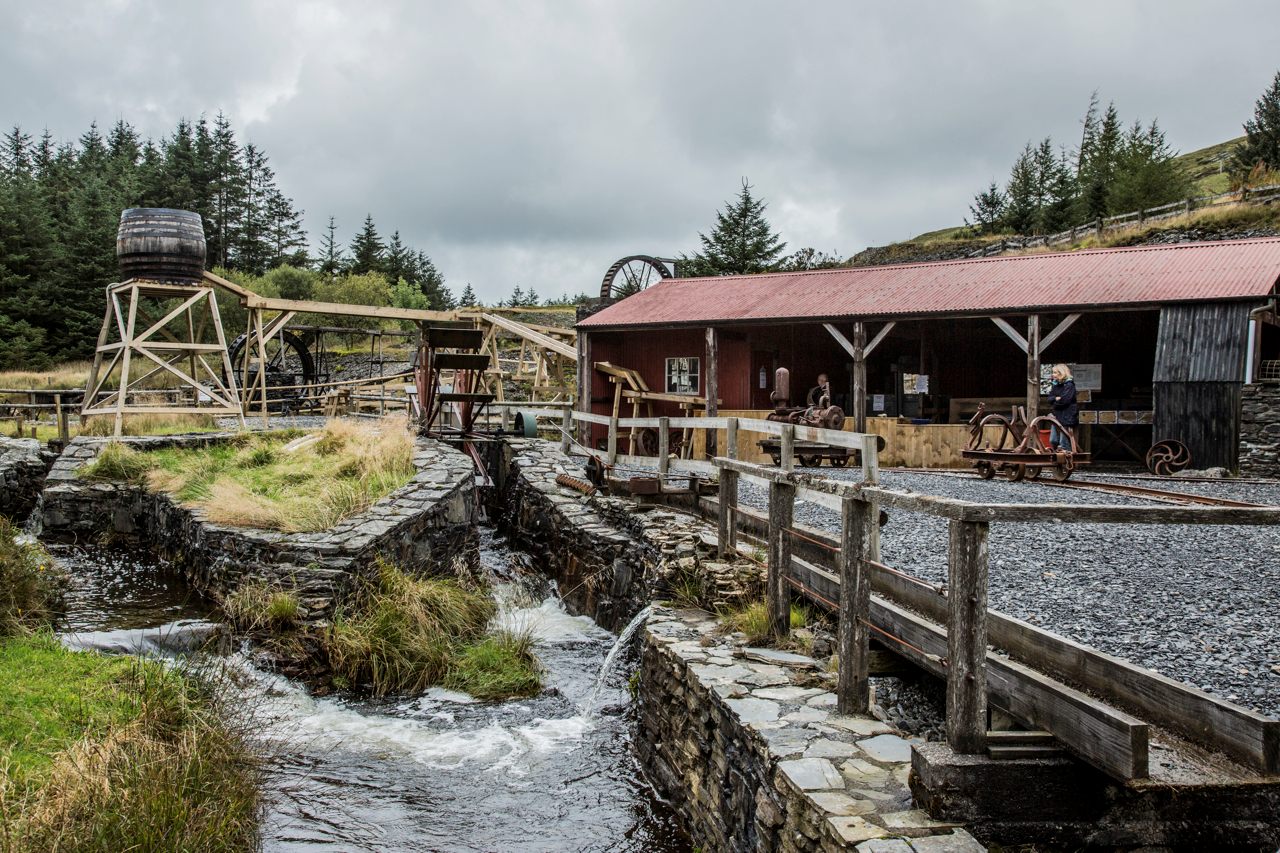
The immersive 'A Miner’s Life' guided tour provides an insight into the 250 year old mine, both above and below ground.
There's plenty for families and younger visitors to experience too: a play area where children and adults alike can discover how to control the flow of water along different channels and systems, just like the miners did across the mountainside to work the mines. There's also an undercover 'gold' and 'gem' panning experience or explore a custom-built digital recreation of the mine. There are quiz trails to follow across the site, including a nature quiz to discover the range of animals and plants that live on the site.
The Dragon's Tale tour has clues and codes to crack to find a friendly dragon. In contrast The Black Chasm actor-led tour delves into the gruesome history and awful mining conditions as well as ancient myths and local legends about mythical creatures that the miners believed occupied the hidden depths of the mines.
The mining landscapes of north Ceredigion
Explore further afield into the Cambrian Mountains to discover Cwmsymlog, Cwm Ystwyth and other sites associated with the industry.

Cwmsymlog mine was described in 1744 by Lewis Morris, who was charged with surveying the area for the crown, as "The richest in lead & silver of any in his majesty's dominions" and silver mined from the Cambrian Mountain mines was abundant enough that a Royal Mint was established at Aberystwyth castle during the 17th century.
In the 17th century Sir Hugh Middleton had the lease on several mines in the area, which earned him an income of £18,000 a year and from 1750 onwards, lead mining activity increased significantly until it peaked in the mid 19th Century. By 1870 there were 10,000 workers associated with the industry in the Cambrian Mountains and workers were attracted from other mining areas such as Cornwall and even as far afield as Italy and Germany.
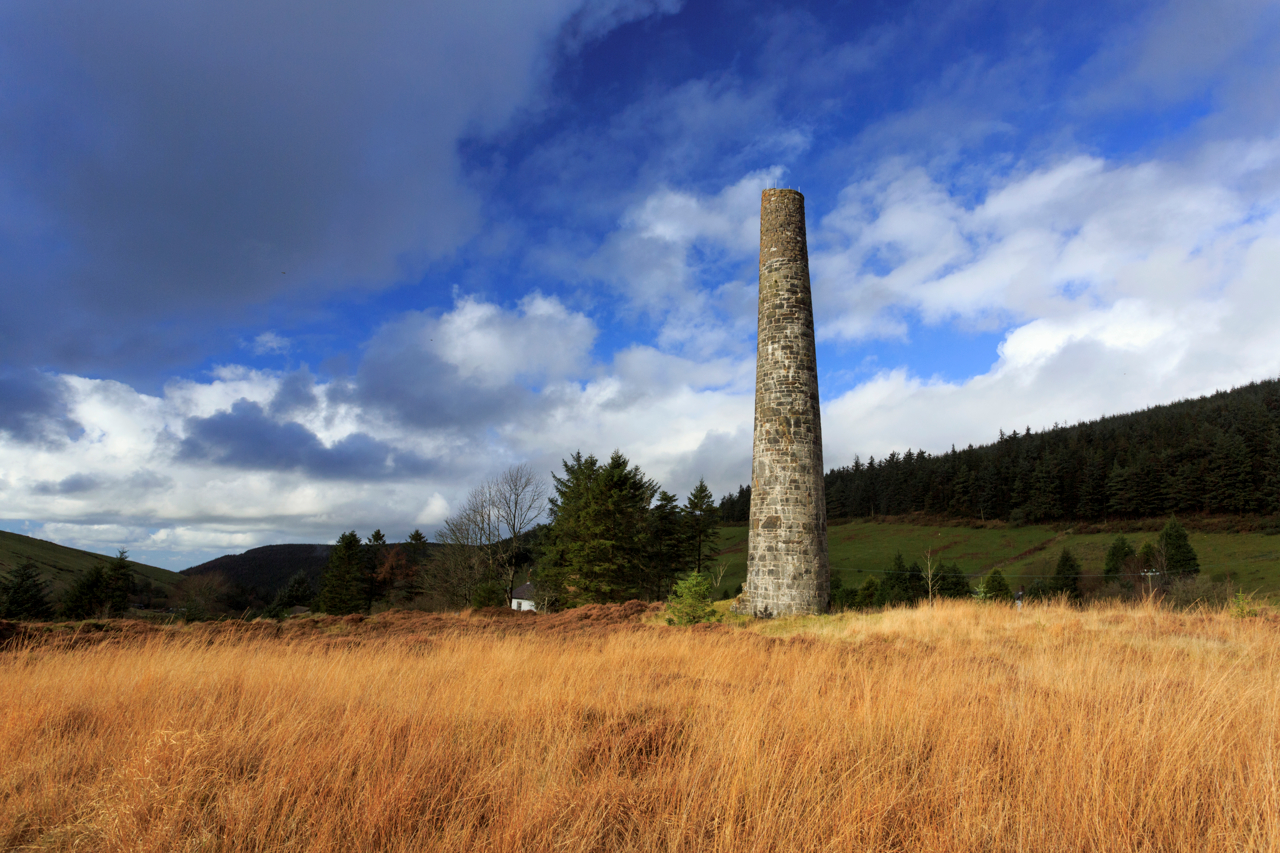
Lewis Morris' account states that there were so many languages being spoken at the Esgair Mwyn mine in 1755 that he dubbed it 'Babel'. the extent fo mining also drew comparisons from far afield - Cwmystwyth mine was likened to the great Potosi metal mines in Bolivia, and speculators dubbed their workings with names such as the ‘Welsh Broken Hill’ Mine and 'the California of Wales' perhaps reflecting their hope and ambition as the industry reached its height in the late 19th century.

Mining heritage walks in the Cambrian Mountains
Follow the Spirit of the Miners routes across northern Ceredigion and spot ruins, former tram tracks and 'leats' around Talybont and Bontgoch, see the chimney, chapel and ruined barracks at Cwmsymlog and ponds at Ystumtuen on the Borth to Devil's Bridge and Pontrhydfendigaid route.
Discover Ceredigion's hidden industrial past by following the route linking the Ceredigion coast at Borth to Devil's Bridge and on to Pontrhydygroes and Pontrhydfendigiad in the Cambrian Mountains. The route is described in six sections:
1 Borth - Talybont. archaeologists found evidence of Roman lead smelting sites on the edge of Cors Fochno (Borth Bog) but it was during the 19th century that saw the growth in mines and mills at Talybont.
2 Talybont - Bwlch Nant yr Arian. There are old turbine houses, weirs and leats to be seen on the route from Talybont to Bontgoch, and at Cwmsymlog the mining remains include a chimney, miners cottages and chapel. The route continues to Bwlch Nant yr Arian (the gap of the silver stream)
3 Bwlch Nant yr Arian - Devil's Bridge. The route passes through the mining community of Ystumtuen and a chapel that was built for Cornish lead miners. It then descends into the Rheidol valley before climbing back again to Devil's Bridge.
4 Devil's Bridge - Pontrhydygroes. Between Devil's Bridge and Cwmystwyth you will reach the highest point on the route before reaching the dramatic mining landscape of Cwm Ystwyth and the forest estate of Hafod.
5 Pontrhydygroes - Pontrhydfendigaid. Pontrhydygroes retains many features of its mining past which are worth seeking out before ascending to the open moorland and Banc Esgair Mwyn ridge, continuing to Ffair Rhos and the hillfort of Pen y Bannau overlooking Strata Florida abbey.
6 Pontrhydfendigaid to the Ystwyth Trail. The monks of Strata Florida were miners and farmers as well as scribes. Follow the Teifi river to the edge of Cors Caron (Tregaron bog) to join the Ystwyth Trail. You can follow the Ystwyth Trail to Aberystwyth or continue to Tregaron.
There are circular routes at locations where it's worth spending a bit more time exploring the details:
Talybont: the route takes you along the Ceulan and Cletwr valley slopes past past ancient mine workings, some of which could be from Roman times.
Bontgoch: mineworkings and reservoirs as well as views and waterfalls characterise this route
Cwmsymlog: see ancient mine workings and a hillfort as well as the mining villages of Cwmsymlog and Goginan
Bwlch Nant yr Arian: the remains of Cwmbrwyno mines and hillforts probably constructed to protect the wealth of the mines.
Devil's Bridge: Cross the Rheidol gorge to Temple mine and Ystumtuen over Parson's Bridge. Cross the river again, downstream, and climb up to the Vale of Rheidol railway.




